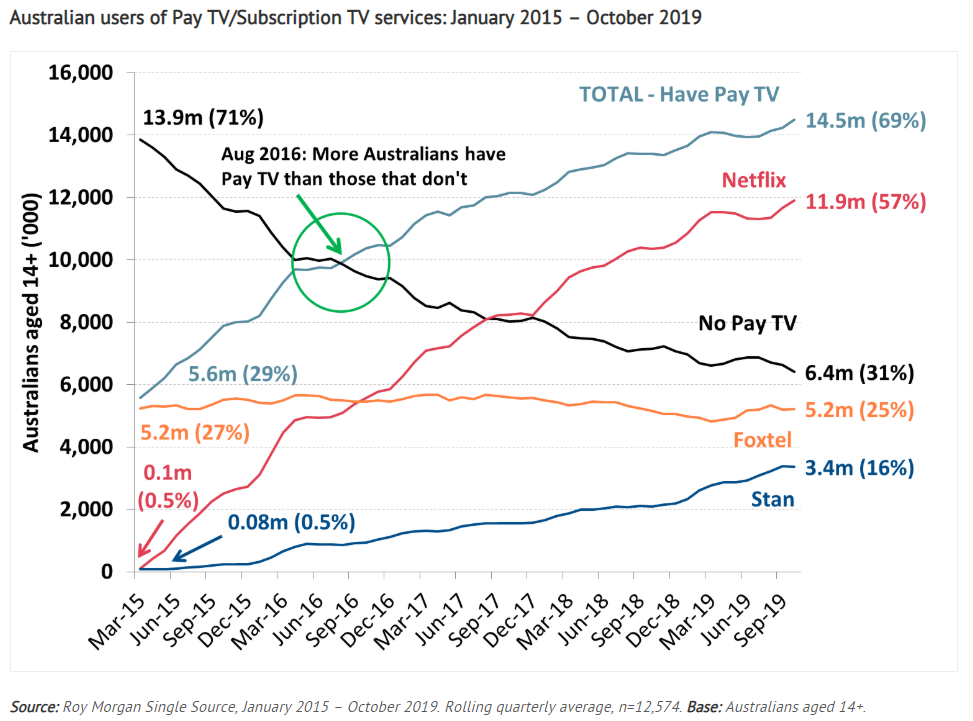Foxtel CEO, Patrick Delany, has attempted to put a positive spin on the loss of subscribers from its basic packages, telling a Future of TV Advertising conference in Sydney that these are “low-value” customers the company didn’t want anyway:
Foxtel’s churn is coming from low-value customers the company “shouldn’t have chased” because they were paying just $26 for a basic subscription that “is not a great experience” anyway, according to CEO Patrick Delany…
“The strategy is that Foxtel only goes to 30% of Australians. That’s all we’re able to monetise, [when we’re paying] a huge amount of fixed-costs rights, whether it’s in sports or non-sport. So how do you get the rest of the country to see this and pay?”
Kayo is the way to do that, Delany contended, giving Foxtel the breathing room it needs to be a premium content experience, rather than cannibalising its subscriber base.
… “to have 400,000 paying customers for [Kayo] sports alone at a premium price of 25 bucks with no tricks, no bells, no whistles, is one hell of an achievement. It is a big business already…
“Customers we are losing at Foxtel are the low-value ones that in the last five years, we probably shouldn’t have chased. $26 basic
at Foxtel is not a great experience,” he continued.My Subscriptions
You have no active subscriptions. Find your first subscription in the store.
“Especially because you don’t have an iQ4 [Foxtel’s 4K streaming box launched in 2018]. And I can tell you from a capital standpoint, income standpoint, it’s not an experience either. So we have put our prices up and and our packages up to 50 bucks now. You get an iQ4, you get all of our streaming capability and basics, so a lot’s changed”…
Delany’s spin cannot overcome the fact that Foxtel’s business is slowly dying.
Kayo’s 400,000 subscriber base is an underwhelming achievement when viewed against Netflix and Stan, which have 11.9 million and 3.4 million users respectively and are experiencing strong growth (see next chart).

Heck, even Optus Sports announced that it had acquired 800.000 subscribers last month, double Kayo’s.
Meanwhile, Foxtel’s traditional high margin cable business is bleeding subscribers as consumers ‘cut the cord’ and move to cheaper video-on-demand (VOD) services. This has meant that any growth that Foxtel is experiencing is in lower margin VOD services like Kayo, which at just $25 a month is cannibalising its cable subscription base and reducing the company’s average revenue per user.
Slowly but surely, Foxtel is losing the subscription war to lower cost and nimble VOD offerings like Netflix, Stan, Amazon and Disney, which offer subscriptions for just $6 to $12 a month.
In turn, Foxtel is confronting a similar fate to Blockbuster – a once dominant incumbent destroyed by changing technologies and consumer preferences.

